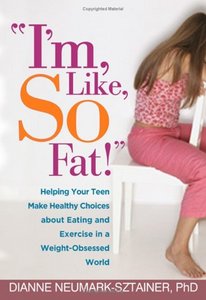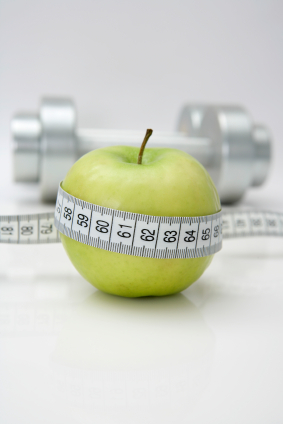 Sept. 3, 2009 Lots of chatter on Twitter about yesterday’s Jezebel piece and the WSJ article about dieting 4th graders. It leads off,
Sept. 3, 2009 Lots of chatter on Twitter about yesterday’s Jezebel piece and the WSJ article about dieting 4th graders. It leads off,
“In 1986, 80% of fourth-grade girls were dieting. Wall Street Journal reporter Jeffrey Zaslow interviewed 100 of them back then, and recently followed up with a few, asking if they think things are getting better for girls. The verdict: It’s even worse.”
As one who keeps a keen eye toward the ‘chicken or the egg’ phenom of media’s power to fuel the fire, I can’t help but wonder if all this attention on body image is stoking the engine, even when trying to counter-market ‘thinspiration.’
On the flip side, it’s not like we haven’t tried to ‘pull the emergency brake’ in hopes of switching the track on a runaway train, but it seems like it’s one of those really bad Wile E. Coyote and Roadrunner set ups…a ‘so close and yet so far’ scenario of being within reach of meaningful dialog only to have it blast like ACME cartoon dynamite leaving kids themselves singed.
The propensity for an appearance-based culture with reality show humiliations and macro meanness offers junk food for the mind and body that’s digging us deeper into a hole…But is all this talk about childhood obesity making it worse? Is silence and ignoring it the answer?
Should we all just shut up?
That’s what Jezebel asks point blank, and something I’ve carefully watched in our own healthy eating messaging with kids to make sure it’s not a fat-phobic message, but instead a ‘fueling the body as well-oiled machine’ message. (the ol’ Citius, Altius, Fortius: ‘swifter, higher, stronger’ motto)
Quoting the current 60% stat of kids feeling thin is a prereq for being liked, Jezebel asks readers,
“The question is, what are we going to do before another 20 years go by, and stats are up to 75 or 80%, with 100% of fourth-grade girls dieting and new studies showing that female infants are worried their diapers make their butts look fat?”
“When “I feel fat” becomes a teen’s common refrain, how can worried parents respond constructively?”
Enter Dr. Dianne Neumark-Sztainer author of “I’m, Like, SO Fat!” who gives parents, teachers, and ANYone working with kids constructive ways to strike a delicate balance between health education (that bolsters self-esteem and incentivizes kids) without getting sucked into the vortex of the whole ‘weight obsessed’ media mindset.
As a mom and a hands-on counter-marketing gal, I’m constantly testing content for our ‘Dare to Compare, Gross Out Game for Good Nutrition’ kids games, so I pay VERY close attention to Dr. Neumark-Sztainer’s do’s and don’ts to ensure word choice and framing veers toward healthier choices and alternatives NOT weight itself.
In fact, I use my own body to prove that even though I’m ‘thin’ you’d never know I have high cholesterol…it’s NOT about body image and fat/thin messaging, it’s about health and well-being. (and in my case, genetics)
Here are just a few of her chapter headings that delve into solutions-based ways to address HEALTH NOT WEIGHT issues and have dialog WITHOUT sounding the alarm on ‘childhood obesity’ and the whole body shame/blame game of media messaging…
“Suggestions for parents are sensible, doable, and grounded in current realities of family life. In an era of much confusion about body shape and weight, this book can serve as a powerful guide to raising children with a positive connection to healthy eating and their bodies.”–Niva Piran, PhD, Counseling Psychology Program, University of Toronto, Canada”
“For parents seeking to raise children who feel good about themselves and their bodies, this book is chock-full of helpful, practical information and insights. It will also be a valuable resource for health professionals and educators. Based on the research and wisdom of one of the country’s leading adolescent nutrition experts, this book can help make a difference in the lives of teens and families.”–Mary Story, PhD, Division of Epidemiology and Community Health, University of Minnesota, Minneapolis, MN
Not here to hawk books, don’t know the lady from adam, but just sayin’ she’s got some solid talking points obviously backed by some heavy hitters (Kelly Brownell at Yale, Dr. Michael Levine, coeditor of Preventing Eating Disorders, yadayada…) and it’s helped me in my work with kids at Shaping Youth.
As always, I like my science distilled into easy, conversational nuggets and am a research junkie who prefers readable whys, hows and ‘what are we gonna do about it’ rather than stats and analysis that pontificate…
I tend to have a media-thought-bubble stereotype dating back to ‘Dr. Lilith Sternin- Crane’ of Cheers and Frasier fame when I hear of heavy duty psychologists and PhDs…(see? those media images stick!)
…So I particularly love how Dr. Neumark-Sztainer warms up to readers using her firsthand experiences ‘in the trenches’ as a mom of four to convey just how important it is that we debunk the media myths and reframe the conversation.
Anyway, with that little book tip as a ‘solutions-based’ nugget, I pass the baton to our own body image expert, Dr. Robyn Silverman…
Dr. Robyn has an equally colloquial and approachable tonality that always makes me smile…and for those familiar with her “Kiss My Assets” body image blog, she’s an invaluable resource.
So here she is, weighing in with her take on the Wall Street Journal and Jezebel discussion:
Dieting and Body Image Issues Getting Worse, WSJ Says
by Shaping Youth Correspondent Dr. Robyn Silverman
Well, it’s not like we didn’t know it.
Reporter/writer Jeffrey Zaslow reminds us today in the Wall Street Journal that life ain’t what it used to be. It was 23 years ago that he interviewed some fourth graders in Chicago trying to determine if dieting and poor body image really was as big of a problem as the studies said it was. Well, it was. And now, it’s worse.
The celebs in 1986 were into the fitness phase, as your recollection of leg warmers and off the shoulder “flashdance” shirts might remind you– so girls were thin but they were still rather healthy. Now, well, you know what celebs look like now.
If it’s not Jessica Stroup, it’s Glamour Magazine photoshopping the hell out of Kelly Clarkson making sure her waist looks as tiny as an unrealistic Barbie Doll. Now studies show that kids are striving for zero (or double zero, or triple zero, sheesh) and being sexualized early in the process. As I’ve asked before, what IS the new normal?
I love the way one 1986 fourth graders summed up what she saw in the media when interviewed back then by the WSJ– and what she thinks now as an adult:
“Models look like popsicle sticks,” Suzanne Reisman told me in fourth grade. Today, she amends her observation: “Now they look like toothpicks.”
But don’t get me started.
Studies, as cited by the WSJ, suggest:
Researchers have seen a marked increase in children’s concerns about thinness in just the past few years. Between 2000 and 2006, the percentage of girls who believe that they must be thin to be popular rose to 60% from 48%, according to Harris Interactive surveys of 1,059 girls conducted for the advocacy group Girls Inc.
And
A preoccupation with body image is now showing up in children as young as age five, and it can be exacerbated by our culture’s increased awareness of obesity, which leaves many non-overweight kids stressed about their bodies. This dieting by children can stunt growth and brain development.
That’s right– age 5. Kindergartners are wondering if they’re too fat. Other studies I’ve read in preparation for my book have suggest that even preschool children understand that in our culture “fat is bad.”
I get that we are trying to keep our children healthy by discussing obesity and the need to keep children physically active and eating healthy foods. But what about the flip-side?
I can’t tell you how many schools have approached me asking about programs for their school only to reveal that while they have some obesity awareness programs in place, they speak nothing about body image, fear of fat, media’s influence on our behavior, and eating disorders.
It’s a crying shame– their schools just don’t have the funds to provide programming for the flip-side of the coin. Obesity is a hot topic and poor body image is left in its wake.
My colleague, Claire Mysko, author of “You’re Amazing,” hits the nail on the head here– as she told the WSJ how she also feels that so much worry over obesity can make girls obsessive about weight. Of course she acknowledges that the programs are great vehicles to fight a growing problem, “we have to be really careful how we are implementing nutrition and body imaging.” Yes– we do.
Isn’t it possible to teach girls to be physically active, eat healthily, and feel good about their body shape and size? It seems to me, that psychological well being is just as important as physical well being– and in fact is tied in so tightly together that separating them out is not only silly, it’s careless.
Your thoughts?
Visual Credits: Actress Bebe Neuwirth via CheersBoston.com as linked above










May I post this on The Girl Revolution darling?
Of course, m’dear…
I am sick to death of people judging their own self-worth by the way they look. I praise people like Sarah Maria, author of “Love Your Body, Love Your Life” for trying to help people understand just how valuable you are as an individual- and even teaches a 5-step process to make this happen. Thanks for the post, really informative.
Thanks, Becky…I agree the self-berating is really hitting a toxic tipping point when kids are being unduly harmed.
I started noticing it working on a film we have in dev. called “Body Blitz: Media, Shaping Youth” holding a camera up to the K-5 playgrounds to show the trickled down reverb and impact on kids.
Now I’m almost afraid to continue the funding for it, because it’s gotten so over the top I don’t want to shine the spotlight any further until those stats start being solution-based and dissolving into a productive downward plunge where kids get their self worth internal over external.
I’ll check out the book you mentioned, as I haven’t read that one…but it seems no matter how many books/boosts/bigwigs and workshops drill into us all how vibrant we are as human beings, the default button seems to push back into the mass media reach and saturation which is soooooooooo hard to ignore.
The media stream of what we ‘value’ as a culture is bordering on mind-pollution when ratings support damaging drek/mean-spirited humiliation and appearance-based body snarking…
I dunno…It’s a freakin’ tough call…I keep thinking awareness will create a backlash and reward self-merit over vapid values…but I guess I won’t hold my breath just yet.
I DO think there’s a culture-shift coming & positive signs that a backlash is brewing in favor of more meaningful focal points; I just wish it were much faster.
Meanwhile, we’ll all keep chiseling away at the beast of a beauty myth, eh? Happy reading…enjoy the holiday weekend, I’m gonna go source the book now!
I have to add that on FB when I posted this, many media literacy pros have advocated to keep on rattling cages and NOT to hush up (inc. Frank Baker, who I respect mucho!) because it’s imperative to ‘right the wrong’ awareness comes first. Thoughts?
Found this quote appropo:
“Silence does not always mark wisdom. – Samuel Taylor Coleridge”